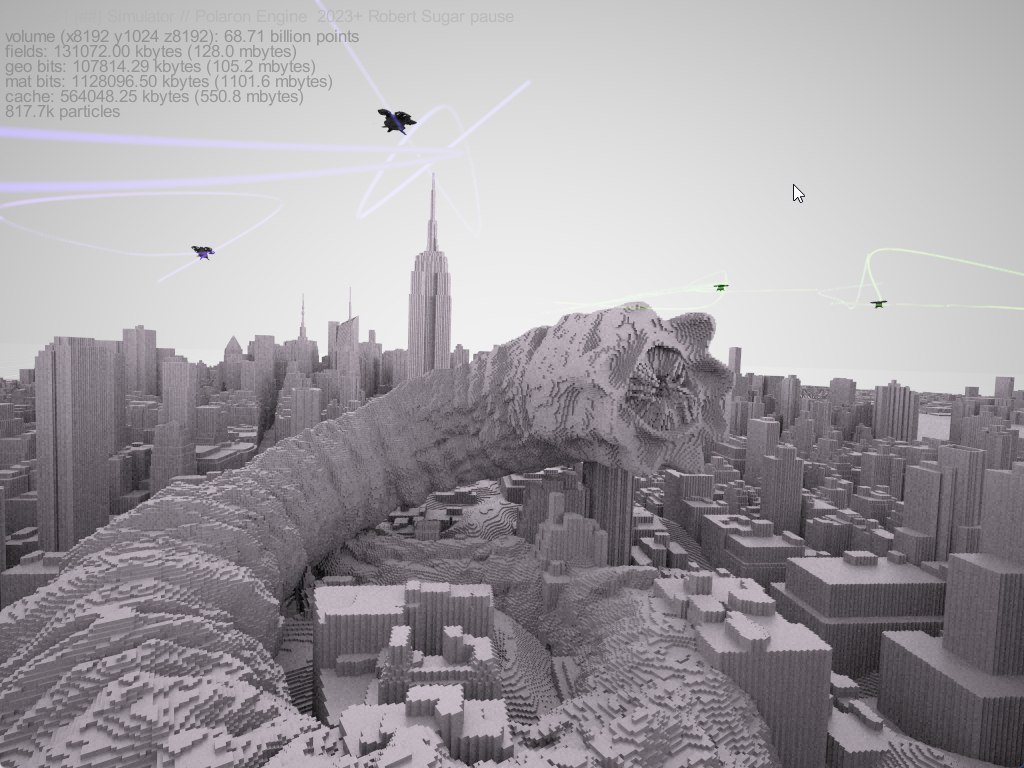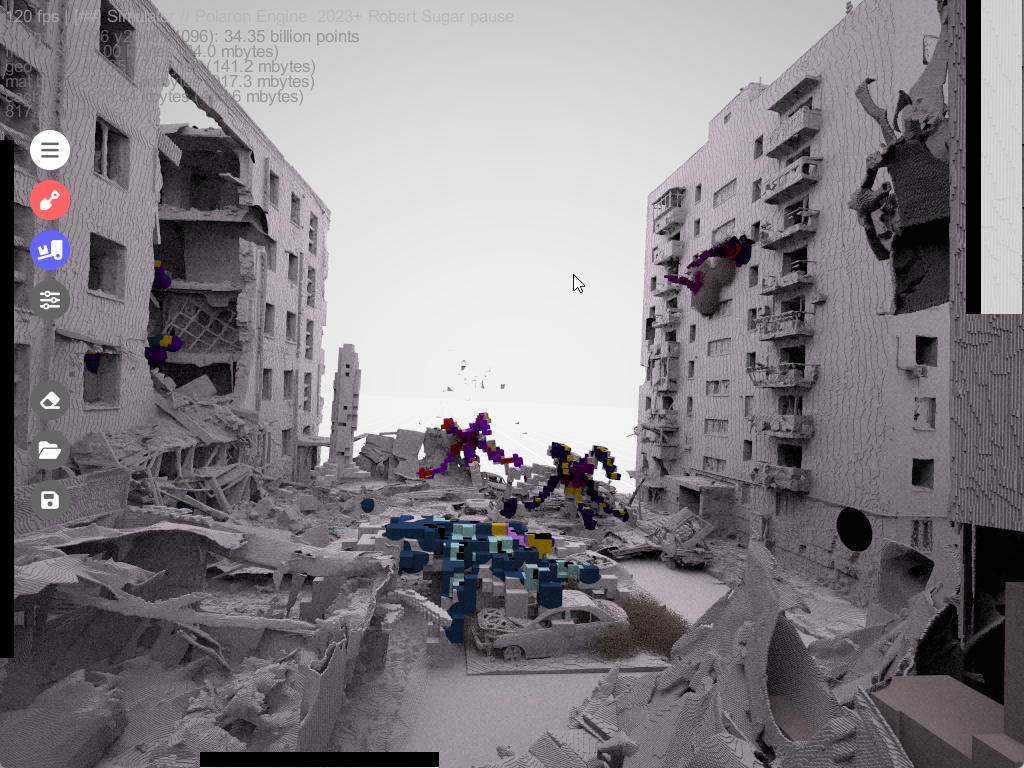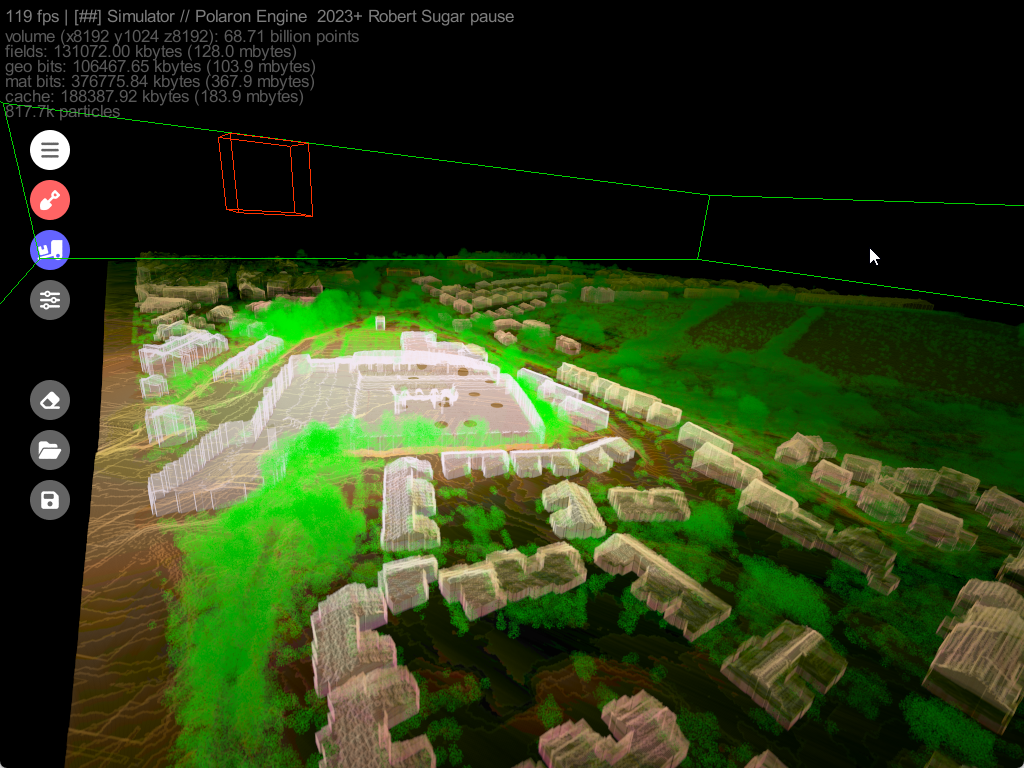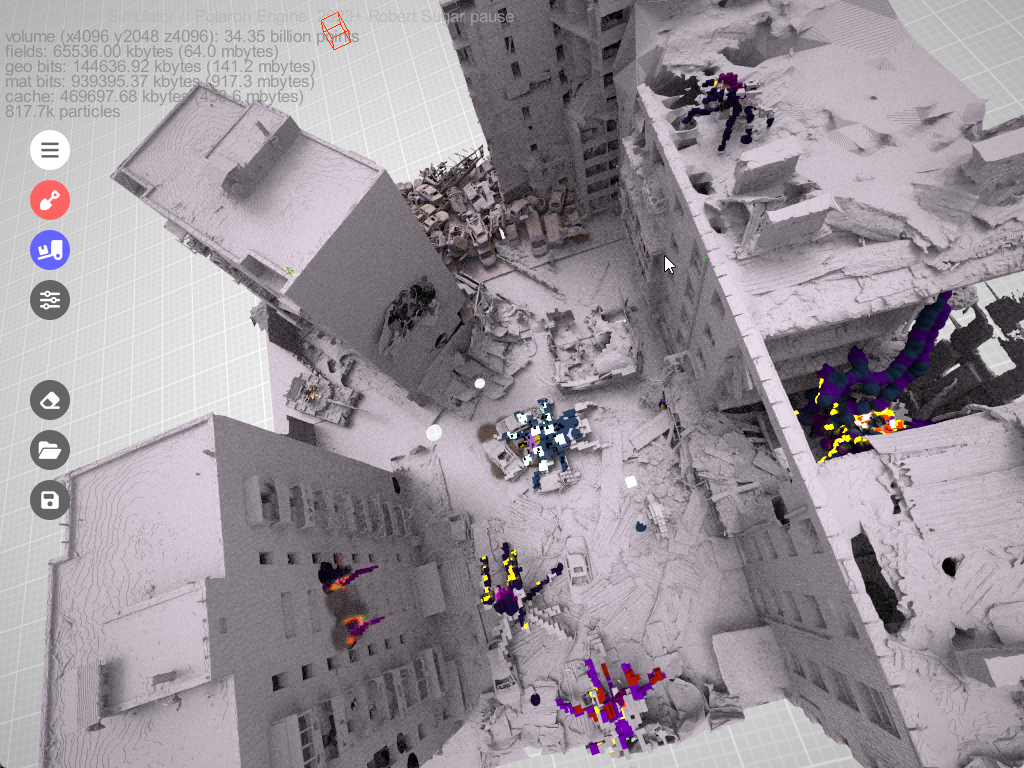What would you do
with a fully editable environment?
What if you could generate worlds from open data, and have living systems inside of them? Better yet, what if you could then go Godzilla on them – or having robots fight and tear through the city. Making a game out of a serious simulation engine is really interesting. Its what we had to do before – you had to make an engine that would best perform what you wanted it to do within the constraints of consumer hardware.
Robert Sugar – CEO

Shai-Hulud – 3D Model imported at City Scale into Polaron – “sandworm from dune 2020” (https://skfb.ly/6VvuG) by Orni is licensed under Creative Commons Attribution (http://creativecommons.org/licenses/by/4.0/).
So why games?
Based on Robert’s experience of publishing several successful games – one of which became a franchise and fairly well road mapped the gameplay of “World of….”
But in practice – it’s because that whilst we can pack a huge amount of data into the simulation and have it interact (which is often fascinating and insightful but not always entertaining).
Consequently the more we’ve worked on GUI’s and experiences – the more we find ourselves hiding mechanics to simplify the experience.
Think less and do more – much as google offered and now Ai & ML and Natural Language processing.
We believe this is the confluence of simulation and gaming. With hidden complexity and consequence in an imperfect situational awareness (what the heck is going on) environment.
We believe these are highly complimentary and begins to lay the foundations for more complex features, toolkits and world building tools. Based on but not dependent on GIS technologies and procedural generation (with Ai on the horizon) – we believe our audience are smart, savvy and happy to navigate complexity – as they do in their own lives.
Therefore whilst masked – the same complexity in our simulations can be found in out games.
Plus its far more fun to watch a giant robot crush a city, than a Covid lockdown or a Power Outage.
But the two are ultimately very much one and the same with different audiences.

Think less and do more – much as google offered and now Ai & ML and Natural Language processing.
John Tapsfield – Chief Technology Officer – Urban Hawk
We believe this is the confluence of simulation and gaming. With hidden complexity and consequence in an imperfect situational awareness (what the heck is going on) environment.
We believe these are highly complimentary and begins to lay the foundations for more complex features, toolkits and world building tools. Based on but not dependent on GIS technologies and procedural generation (with Ai on the horizon) – we believe our audience are smart, savvy and happy to navigate complexity – as they do in their own lives.
Therefore whilst masked – the same complexity in our simulations can be found in out games.
Plus its far more fun to watch a giant robot crush a city, than a Covid lockdown or a Power Outage.
But the two are ultimately very much one and the same with different audiences.
Surface detail isn’t enough – and it’s well served by AAA studios, big budgets and big requirements. We instead want to use our technology to make amazing experiences, faster, more efficiently and empower our users to extend and develop these environments.
Scales & computational budgets
Polaron in effect creates the “street view of data” – a terrain in which to play, simulate and experience a range of different types of gameplay.
Voxels like all technologies face some trade-offs (many of which we’re working to remove and reduce. For instance adaptive scaling of simulation – allows for void areas to be filled with representative data at what amounts to a larger block of data.
However Polaron allows us to “swap in” and even back propagate to an action. It’s the difference between working hard and working smart – in effect instantiating (bringing into being) the necessary resources on an as required basis.
This is just one of the myriad ways we ensure performance.
Which means a representative simulation – that can both brute force and become exceptionally granular as well as adapt to share and spare resources. This provides complexity – which we believe is a cornerstone of a RTS type and Environmental Damage centric games. Rather than being a “feature” the interaction on the space and systems is the cornerstone of the engine.
There are three ways to make a living in this business: be first; be smarter; or cheat. Now, I don’t cheat. And although I like to think we have some pretty smart people in this building, it sure is a hell of a lot easier to just be first.
Told – Margin Call
Ultimately this means getting smarter with the resource constraint (and with a fairly heavy requirement to run both the complexity and scale of the simulations) this means some compromise.
Therefore we have split out our game concepts into three scales. With different trade-offs in each – but fundamentally running on the same engine, using the same data types – albeit at higher levels of detail (LOD).
RTS City Scale
Small effects can have regional consequences and dependencies far beyond the immediate area – fight it out on a wide operational area.

Actions have consequences – based at 1m2 scale this allows you to change a small element at a tactical level and see it play out at a city wide or regional scale. Block a road, or damage a system and see that effect propagate out.
RTS Tactical Scale
Block to block and house to house – including realistic physics in an environment set at 25cm2 – 12.5cm2 allowing destruction of the environment and propagation of effects to create realistic and responsive terrain models and models of systems.

This is likely to be our first game – since we can use EOS data to render 12.5-25cm blocks of data. This means we can’t render individual bricks – but we can accurately represent the world with data. Create multiple layers to buildings, offer features and granular damage. This means you can punch holes through walls and fight it out in a highly dynamic and procedurally generated terrain, routed in reality.
Action Scale
As much fidelity as you want – at a smaller size of terrain. This scene is composed of a combination of hand created, generated and actual Lidar Scans of a damaged Urban Environment.
We can render all of the above at this level of fidelity and will in time get to this – however it becomes a big challenge to obtain full scans (indoor / outdoors) of terrain models and then align them to data. This is the future we will get to eventually – looking at cm / mm resolution and already can do this – but

This is ultimately the level of detail we want everywhere – but requires a lot of tiling and streaming of data to achieve. Which is fine for simulation services or a cloud based platform but begins to stress all but the most powerful PC game rigs.
What this means for you?
As always we’re very keen to hear from prospective players and have you participate in the development and shaping of our games.
We have a laundry list of ideas and concepts and features, but we’d love for you to help shape our development. Please message us or join us on Discord for more info or join our Early Access Programme or reach out via the contact form.
